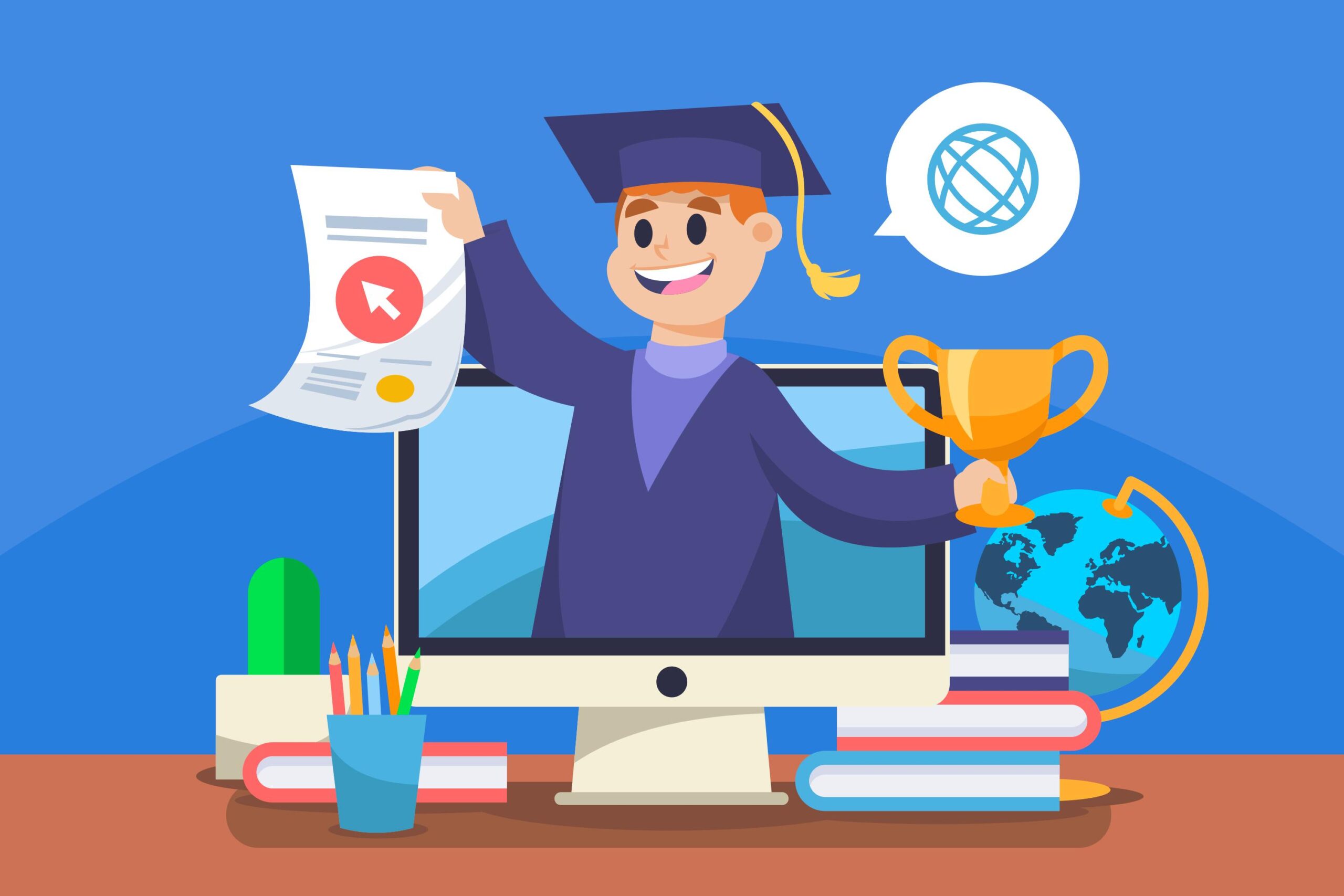
Top Educational Tools to Boost Student Success
Students today face various challenges in their academic journey, but the right tools can make all the difference. These educational tools are designed to support student success, from managing assignments to improving study habits.
In today’s fast-paced world, students face unprecedented challenges in learning. Traditional methods of education, while still essential, are no longer enough to address the diverse needs of modern learners. The rise of technology has opened up a new world of possibilities, allowing students to access learning resources at their fingertips anytime, anywhere.
Educational tools have become essential for boosting student success. Whether they enhance learning through interactive platforms or make study sessions more productive with AI-powered apps, these tools can make a significant impact. This article will explore the top educational tools students should use to maximise their potential and achieve academic success.
1. Learning Management Systems (LMS): Centralised Platforms for Student Success
A Learning Management System (LMS) is a powerful tool that centralises all educational content, assignments, and communication in one accessible platform. Popular systems like Moodle, Google Classroom, and Canvas provide teachers and students with a streamlined way to organise coursework, track progress, and collaborate on assignments.
Why LMS is Crucial for Student Success:
- Organised Learning: Students can access all their course materials, assignments, and deadlines in one place, reducing confusion and promoting better time management.
- Collaboration: Integrated messaging systems and shared documents simplify group projects and discussions.
- Instant Feedback: Teachers can provide immediate feedback on assignments, helping students correct mistakes and stay on track.
Examples of Top LMS:
- Google Classroom: Offers a simple, intuitive interface and integrates seamlessly with other Google tools.
- Moodle: A highly customisable platform that supports various interactive features.
- Canvas: Known for its user-friendly design and strong mobile integration.
Impact on Success:
Research shows that 72% of educators using LMS believe these systems improve student engagement, and 64% report better student performance.
2. Interactive Learning Platforms: Engaging Students Through Gamification
Interactive learning platforms are rapidly changing the way students engage with educational content. Platforms like Kahoot!, Quizlet, and Duolingo combine learning with fun, making it easier for students to absorb information.
How Interactive Learning Tools Benefit Students:
- Gamification: Engaging students with game-like elements encourages active participation and makes learning more enjoyable.
- Instant Assessment: Tools like Quizlet and Kahoot! Provide immediate quizzes and flashcards, enabling students to assess their understanding and track their progress.
- Motivation Boost: Badges, rewards, and leaderboards keep students motivated and excited about learning.
Examples of Top Interactive Learning Tools:
- Kahoot! is a popular quiz platform that offers competitive games that encourage group learning.
- Quizlet: Focuses on flashcards and allows users to create personalised study sets.
- Duolingo: Revolutionises language learning with its interactive and game-like interface.
The Resulting Impact:
Studies indicate that students using interactive platforms are 50% more likely to retain information and perform better on tests.
3. Productivity and Time Management Apps: Maximising Efficiency
Productivity apps like Trello, Todoist, and Forest help students organise their tasks, manage their time effectively, and avoid procrastination. Time management is a crucial aspect of academic success, and these apps are designed to simplify it.
Why Productivity Tools Are Essential:
- Task Organisation: Tools like Trello help students break down large assignments into smaller, manageable tasks.
- Goal Setting: Apps like Todoist encourage setting short-term and long-term goals to improve focus.
- Focus Enhancement: Apps like Forest help students stay focused by turning off distractions and encouraging them to stay on task.
Examples of Productivity Tools:
- Trello: A visual project management tool that uses boards and lists to organise tasks.
- Todoist: A to-do list app with advanced features for setting deadlines and reminders.
- Forest: A unique app that rewards students for staying focused by planting virtual trees.
Impact on Academic Performance:
Students who use productivity tools are 25% more likely to complete assignments on time and report feeling less stressed during exams.
4. Personalised Learning Apps: Tailoring Education to Individual Needs
Personalised learning apps cater to each student’s unique learning pace and style. Khan Academy, Coursera, and Edmodo offer adaptive learning paths that provide a customised educational experience, ensuring students are included.
Benefits of Personalised Learning:
- Adaptive Content: These apps adjust the difficulty level based on the student’s performance, providing more challenging tasks as the student progresses.
- Self-Paced Learning: Students can learn at their own pace, allowing them to spend more time on complex concepts and breeze through easier ones.
- Inclusive Learning: Personalisation ensures students with different learning needs and abilities can thrive.
Examples of Personalised Learning Platforms:
- Khan Academy: Offers a wealth of free, personalised video lessons and exercises.
- Coursera: Partners with universities to provide online courses with a personalised curriculum.
- Edmodo: Combines learning management with personalised feedback from educators.
How Personalised Learning Enhances Student Success:
Students who engage in personalised learning are shown to have a 20% improvement in grades and a 30% increase in retention rates.
5. Collaboration and Communication Tools: Connecting Students and Teachers
Effective collaboration and communication between students and teachers can significantly impact academic performance. Tools such as Slack, Microsoft Teams, and Zoom provide platforms for instant communication, file sharing, and real-time collaboration.
Why Communication Tools Matter:
- Improved Access to Teachers: Students can ask questions, clarify doubts, and seek help without waiting for classroom hours.
- Group Collaboration: These platforms make it easy for students to collaborate on projects, share documents, and provide feedback in real-time.
- Increased Engagement: Instant messaging and video conferencing make it easier for students to remain engaged, even in virtual classrooms.
Examples of Popular Collaboration Tools:
- Slack: A messaging app designed for teams perfect for group projects and teacher-student communication.
- Microsoft Teams: A comprehensive communication tool that integrates well with other Microsoft products.
- Zoom: A widely-used video conferencing platform that facilitates live classes, discussions, and seminars.
The Resulting Benefits:
Students who communicate actively with their peers and instructors are 30% more likely to feel confident in their learning and succeed academically.
6. AI-Powered Study Tools: Harnessing Artificial Intelligence for Better Learning
Artificial intelligence transforms education by offering tailored recommendations, insights, and predictive analytics. Tools like Grammarly, Quizlet, and Socratic by Google use AI to help students improve their writing, vocabulary, and problem-solving skills.
How AI Enhances Student Success:
- Real-Time Corrections: AI-powered apps provide immediate corrections and suggestions for improvement, enabling students to learn from their mistakes.
- Intelligent Recommendations: AI algorithms suggest additional resources, practice questions, or exercises based on the student’s progress.
- Personalised Feedback: AI can assess patterns in student performance and provide personalised recommendations to target areas that need improvement.
Examples of AI-Powered Tools:
- Grammarly: A writing assistant that uses AI to suggest grammar and style improvements.
- Quizlet: Uses machine learning to personalise quizzes and study materials for each student.
- Socratic: Google’s AI-powered app that helps students with homework by providing step-by-step explanations.
The Future of AI in Education:
Students using AI-driven tools report faster learning and increased accuracy in their work. AI can boost learning outcomes by up to 40%.
Conclusion
The future of education is undoubtedly tied to technology. Using the right tools, students can overcome learning barriers, enhance their productivity, and achieve tremendous academic success. From learning management systems to AI-powered study aids, these tools are more than just fancy gadgets—they are vital resources to help students maximise their potential.
Investing in the right educational tools is no longer optional but necessary. By embracing these tools, students can set themselves up for success in an increasingly competitive and technology-driven world. Whether you are a student, teacher, or parent, integrating these tools into the learning process will empower students to thrive academically and beyond.


